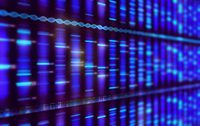Rachel L. Alexander, MS, MB(ASCP)CM, ASCLS Molecular Diagnostics Scientific Assembly Vice Chair, Technical Supervisor for MicroGenDX

Though there are superb laboratories that provide molecular diagnostics, most applications are in the genomics field or are performed by private companies. The use of Next-Generation Sequencing (NGS), specifically regarding infectious disease, is sparse and profoundly underutilized. I constantly find myself asking the question: Why isn’t NGS being considered for the majority of patient care?
Laboratory testing by microbial culture remains the primary diagnostic tool for infectious disease detection. Traditional culture methods depend on providing the necessary conditions for pathogenic species to reproduce. The conditions include predetermined agar or broth media, proper temperature, and time for suspected species to grow. A laboratory professional then assesses the plate for microbe speciation by established bacteriology knowledge.
Culture can detect aerobic bacterial species in a relatively short time (typically 12-48 hours) for a low cost. It is also useful in the ability to detect antibiotic susceptibility for pathogen eradication. Antibiotic susceptibility testing is, however, limited since susceptibility can vary among species, and even strains, within the infection. Culture methods have other disadvantages including qualitative verses quantitative microbe amount, time for difficult species growth, low throughput, and contamination. Additionally, anaerobic species are usually not investigated until subsequent testing is required.
Next-Generation Sequencing (NGS) is a term that encompasses several modern sequencing technologies. The data is obtained by rapid sequencing of DNA base pairs from isolated DNA or RNA. The application for infectious disease testing uses isolated patient DNA to detect and quantify (aerobic and anaerobic) bacterial and fungal species. The microbial species are identified by matching their specific DNA base sequences to national databases. The databases include over twenty-five thousand known sequences with a 99.9% detection accuracy.
A large advantage of NGS technology for infectious disease is the ability to concurrently identify multiple pathogens within a single sample. This capability to detect a polymicrobial infection is especially valuable for patients with complex or chronic infections. Additionally, NGS data can be used quantitatively to detect percentages of each organism present within the infection.
Another great asset of NGS is the ability to identify bacterial resistance genes. Antibiotic resistance genes present in one or more species can be passed to other species through horizontal gene transfer. This bacterial capability is the reason susceptibility testing is less relevant for treatment options, in my opinion. For example, an antibiotic may be prescribed that will work on one susceptible species but fail to eliminate the infection if any other species or resistance genes are present. By using NGS technology, a “personalized and targeted” treatment plan becomes standard for each patient.
Infectious disease studies have demonstrated that NGS technology outperforms culture methods. A recent study highlighted that out of 44 chronic UTI patients, 13 had positive culture results whereas all 44 were positive on NGS.1 A study of prosthetic joint infections had similar findings. This study found that out of 28 patients suspected to have infections, cultures were positive for only 17 patients; whereas NGS was positive for 25 of the same 28 patients. Additionally, NGS identified 9 more positive patients, from which cultures had already determined were negative, for prosthetic joint infection.2
A popular area of NGS study is found in chronic wound care due to the difficult nature of treatment. By detecting the specific amounts and species within the wound infection, the patient may be able to save the limb from amputation or continual debridement. An example is found in a study comparing culture to NGS for 168 chronic wounds. A total of 17 different bacterial species were cultured, of which 3 species were found in some samples. NGS identified 338 different bacteria with up to 33 species found in some samples. While some of these species were not pathogenic or in high percentage, the 20 most common pathogenic aerobic and anaerobic bacteria that were found lead to significantly improved patient outcomes.3
The lack of NGS implementation in mainstream settings is partially due to cost. Although the startup costs of NGS equipment can be high, the average sample cost can be lowered over time. For example, an average 400 sample run on the Ion Torrent PGM machine cost is similar to running 2-3 routine cultures. The cost of testing for patients is being lowered also since CPT codes have been developed for molecular testing and are now accepted by many insurance carriers.
I believe the principal reason for lack of implementation, however, is the absence of awareness by patients and healthcare professionals. Certainly, these groups cannot be expected to request testing methods of which they are unaware. They also cannot understand the benefits of molecular testing without the appropriate information.
I hope NGS testing becomes more widespread as evidence of its advantages continues. It is our responsibility as laboratory professionals to provide the best possible data for patient care. We are the ones performing the valuable services needed for treatment decisions. I urge you to consider how molecular testing could improve your patients’ outcomes.
REFERENCES
- Michael, McDonald et al. “A Head-to-Head Comparative Phase II Study of Standard Urine Culture and Sensitivity Versus DNA Next-Generation Sequencing Testing for Urinary Tract Infections.” Reviews in Urology 19.4 (2017): 213–220. PMC. Web. 27 Feb. 2018.
- Tarabichi, Majd. et al. “Diagnosis of Periprosthetic Joint Infection: The Potential of Next-Generation Sequencing”. The Journal of Bone and Joint Surgery. 100(2) (2018):147-154. PMC. 27 Feb. 2018.
- Rhoads, Daniel D. et al. “Comparison of Culture and Molecular Identification of Bacteria in Chronic Wounds.” International Journal of Molecular Sciences 13.3 (2012): 2535–2550. PMC. 27 Feb. 2018.
- www.microgendx.com
